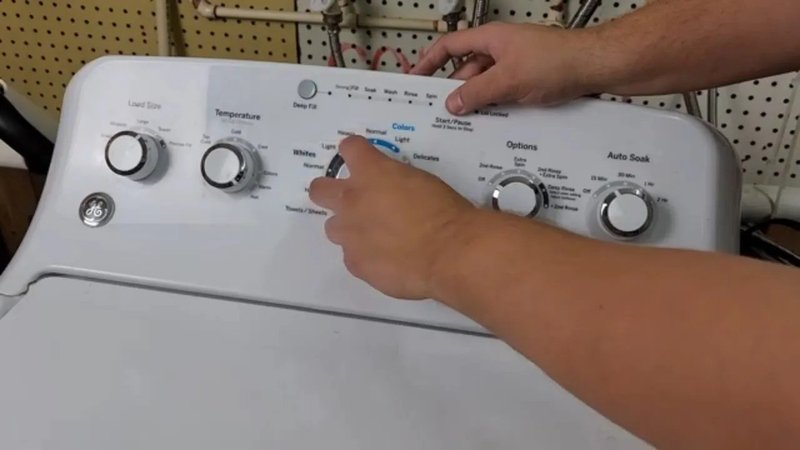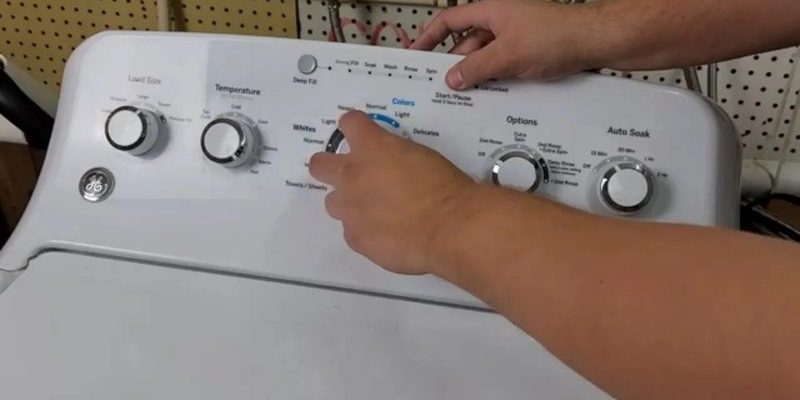
Error codes, in general, are designed to catch our attention and signal a glitch or hiccup in normal operations. The E2 code on a GE washing machine specifically alerts us to a potential issue with the machine’s draining process. In simple terms, it means the machine is struggling to remove water as efficiently as it should. Think of it like trying to drain a bathtub when the plug is only partially open. The water might eventually go down, but it’ll take much longer than necessary. Let’s dive deeper into what this means for you and your laundry room rituals.
Understanding the E2 Error Code
Before deciding whether or not you can ignore the E2 error, it’s helpful to understand precisely what it signifies. The E2 code generally indicates a drain problem, meaning that the water used to wash your clothes isn’t exiting the machine correctly. This can be due to a variety of reasons, such as a blocked drain hose, a kink in the hose, or even a faulty pump.
Imagine trying to sip your favorite smoothie through a straw that has a piece of fruit stuck in it. It would definitely take you longer to drink it, and you’d need extra effort to get it through. Similarly, if the washing machine’s drain hose is blocked, the machine struggles to drain the water quickly and efficiently. The pump works overtime, leading to stress on the machine’s components and potentially wearing them out faster.
Now, one might think it’s okay to ignore the E2 error as long as the machine eventually drains, but regularly operating under these conditions can lead to bigger issues down the road. Just as driving with a flat tire can damage a car’s rim, continuously running a machine with a drain issue can lead to significant wear and eventual mechanical failure.
Potential Consequences of Ignoring the E2 Error
So, what’s the worst that could happen if you decide to ignore the E2 error? It’s a bit like leaving a small leak unchecked in a new roof. Initially, it may seem like a minor inconvenience, but over time, it can cause substantial damage. For the washer, this can mean a range of problems from increased utility bills to more severe malfunctions like pump failure or even flooding.
Firstly, if the water doesn’t drain properly, your clothes may end up soaking wet at the end of the cycle. Not only is this frustrating, it also means using more energy for drying, whether you hang the clothes or use a dryer. Moreover, excess moisture can lead to mold growth within the machine, particularly around seals and the drum, which can lead to unpleasant odors or even health concerns.
Additionally, continuously forcing a machine to work with a blocked drain could lead to the motor burning out. This could mean a costly repair or potentially having to replace the entire unit. Imagine running a marathon with a sprained ankle; over time, you’re likely to cause more damage than if you’d simply taken a moment to address the issue early on.
Steps to Resolve the E2 Error
You’re probably eager to fix this hiccup so you can get back to smooth laundry days. The good news is that resolving an E2 error might not be as daunting as it sounds. One of the first steps is to check the drain hose for any visible obstructions. Make sure it’s not kinked or bent in ways that could impede water flow, much like ensuring a garden hose isn’t tangled while watering plants.
If the hose looks fine, you might want to give the filter a look. Over time, filters can get clogged with lint or other debris, blocking the water as effectively as a brick wall. Gently clean the filter following the manufacturer’s guidelines to ensure it’s clear and functioning correctly. In some cases, you might find that simply removing the obstruction is enough to resolve the error and restore normal operation.
If these steps don’t solve the issue, it might be time to call in a professional. Some problems, such as a faulty pump, require a more in-depth repair or even replacement. Think of calling a technician like consulting a doctor when home remedies don’t clear up a persistent cold—it’s about ensuring the problem doesn’t escalate into something more significant.
Preventing Future E2 Errors
Now, how can you prevent this error from rearing its head again? Regular maintenance is key. Just like scheduling regular doctor’s appointments or car check-ups, periodically inspecting your washing machine’s components can prevent issues before they start. Make it a habit to check hoses and filters every few months to ensure they’re clear and free of debris.
In addition, be mindful of what you’re washing. Avoid overloading the machine, which can place extra strain on its components, similar to how carrying too many groceries at once can tire you out quickly. Also, pre-rinse particularly dirty items to prevent excess debris from entering the system.
Scheduling a professional service check every year or two can also be a wise investment in your appliance’s longevity. Just like a health check-up can catch potential problems early, a technician can spot components that are wearing down before they lead to error codes or operational failures. In the long run, these preventive measures can save you time, money, and the headache of unexpected malfunctions.
In conclusion, while it might be tempting to dismiss the E2 error as an inconvenience, addressing it promptly and understanding the root cause can save you bigger troubles down the road. So, next time your GE washing machine flashes that alert, take a moment to give it some attention—it’ll pay off in the long run.
